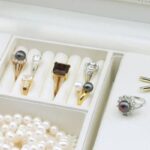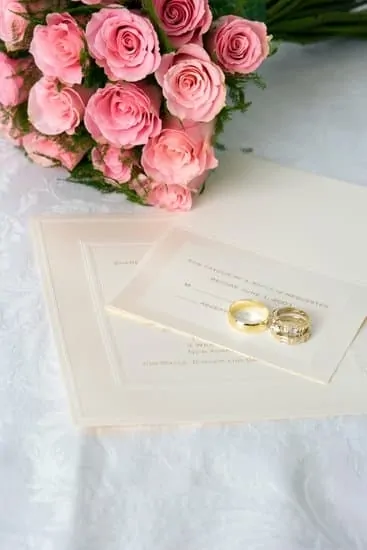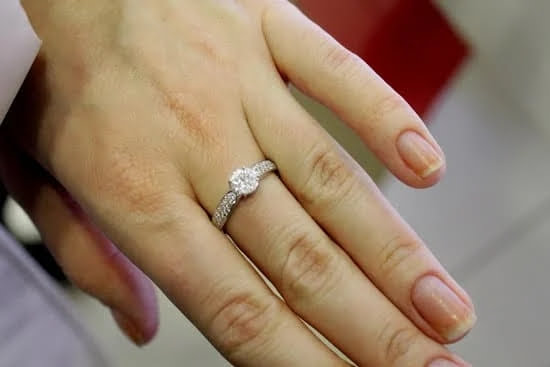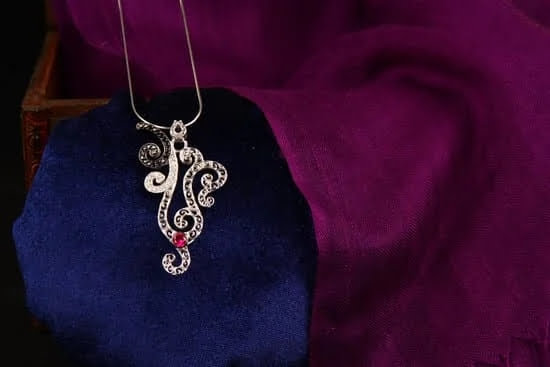When it comes to jewelry metals, there are a number of factors that need to be taken into consideration in order to determine which is the most appropriate for the desired purpose. Jewelry metals compared range from gold and silver to copper and brass with each one offering different characteristics depending on the intended use.
Gold has traditionally been seen as a higher-end metal synonymous with luxury items, while silver can also be very desirable when used in certain pieces of jewelry.
Other metals, such as copper and brass, may not offer quite the same level of prestige but they can be used to create unique looks at more affordable prices. As such, it is important to research the various options available and explore how they will look when finished.
Gold is perhaps the most sought after jewelry metal due its traditional associations with luxury. It has a shiny luster that makes it very appealing and will retain its color for a long time before requiring maintenance or polishing. Gold is also very soft so if items made from gold require wearing over long periods of time then it must be alloyed with other metals in order minimize wear and tear.
Silver also offers many desirable properties as a jewelry metal; its shine may not be quite as intense but silver pieces tend to keep their polish better than gold due its greater durability. Silver can patina naturally over time giving it a unique aesthetic quality that some buyers seek out when purchasing jewelry pieces made from this particular material.
Copper is another popular choice among those seeking a less expensive option for their jewelry materials; copper has an orange hue that means it reflects light very well and make items crafted from this metal stand out from others when placed next to them due to its bright color. Similarly, brass offers another affordable option but differs from copper by having more yellowish undertones which gives off an antique look perfect for vintage-inspired pieces or rustic designs.
Whatever material you choose, remember that all metals must undergo several expert processes in order to be ready for use jewlery making ensuring your items have a high-quality finish you will be proud of wearing or gifting someone special in your life.
Gold
Gold is one of the most popular and important metals used in jewelry, with some pieces pre-dating civilization. Gold offers many benefits, including its beautiful bright colour, luxurious feel, as well as its everlasting durability. Gold does not easily corrode or rust, making it ideal for jewelry that will be worn for years. Gold also tests for purity at a very specific standard – 24K gold is 100% pure, meaning that it cannot contain any other type of metal alloy.
A variety of colors are available when shopping for gold pieces such as yellow, green, pink and even white gold. Each color is created through a process called “alloying” which mixes different metals together to create different shades of gold. The most common alloys used to make yellow gold are silver and zinc; white gold contains nickel and silver; and green gold uses copper along with other elements like silver or palladium.
The quality or purity of gold jewelry is measured by karats (K). 24K is the purest form of jewelry while 10K has the least amount of pure gold content (41.7%). Different karats can mean a difference in both value and price so customers should be aware when purchasing an item.
Purchasing higher karat items usually translates into better value since more valuable material is being used to produce the item itself. Furthermore, higher karat options reflect a less reliance on alloys which can cause potential issues over time such as colour changes, tarnishing etc Gold jewelry is a timeless asset that will last for generations with proper treatment and cleaning to protect against wear and tear caused by everyday activities.
It remains one of the most popular choices among shoppers due to its glowing tones, luxurious feel and subtle sophistication that comes along with it – all qualities that make it an excellent long-term investment if cared for properly.
Silver
Silver is a common metal choice often used in jewelry designs due to its affordability and durability. Silver is able to hold intricate details, particularly compared to gold which can be more malleable and difficult to manufacture. Additionally, silver doesn’t require any specialty care or cleaning treatments like gold jewelry, making it a good go-to choice for everyday wear.
One of the primary benefits of silver is its ability to take on certain finishes that make it more appealing than its plain state. Some popular finishes with silver include high polish, antiqued, matte finish, muted satin, hammered design elements and beaded textures. Designs with these finishes provide added detail and an eye-catching appeal for the wearer of the jewelry piece.
Sterling silver is an alloy made from at least 92.5% pure sterling silver with 7.5% other metals such as copper or zinc added for additional strength and durability. The popularity of sterling silver has grown exponentially over recent years due it being more affordable than precious metals while maintaining the same quality look that they offer. Sterling silver won’t rust or corrode over time making it a great long term investment if taken care properly.
There are many different alloys available when choosing what type of metal your jewelry will be crafted with including White Gold, Yellow Gold, Rose Gold, Platinum and Sterling Silver among others. Depending on your desired look along with budget considerations choosing the right alloy typically comes down personal preference for any given piece of jewelry though some alloys may be better suited for certain types of molds or designs.
Platinum
Platinum is a precious metal that has been used in fine jewelry since the late 1700s and is more expensive, durable, and rare than gold or silver. It has many exceptional properties such as its resistance to tarnish and discoloration, its ability to hold gemstones securely, and its incredible density. Platinum also offers a beautiful white color that doesn’t fade over time like other metals might.
Some of the benefits of platinum include it being 95% pure (higher purity than gold or silver) which means less hypoallergenic reactions for some people with metal allergies. Platinum is strong and dense so it holds up well against everyday wear and tear, which makes it ideal for all types of jewelry from rings to earrings.
One aspect that makes it even stronger is that unlike other metals such as gold, platinum can be worked on multiple times without becoming too brittle or fragile.
When discussing platinums carat weight options one must understand there are five different options available; 950 parts per thousand (95% pure), 900 parts per thousand (90%), 850 parts per thousand (85%), 750 parts per thousand (75%) and 500 parts per thousand (50%).
The most popular choice is the 950 containing 95% pure or “true platinum” but if cost of budgeting is an issue then finding a lower yet still quality metal can be had in any of the other four alloy mixes while still showing off the same amazing characteristics associated with true platinum.
Platinum can be plated in yellow gold or rhodium depending on what look you appriciate more. As family heirlooms tend to symbolize pricelessness; pieces such as wedding bands should always chose true confound free platium rings such as those offered by James Allen’s Titanium line
Palladium
Palladium is a precious metal known for its strength, corrosion resistance, and malleability. It holds many excellent characteristics that make it a popular choice for jewelry. The benefits of palladium include a high-luster finish, color versatility, hypoallergenic properties and environmental friendliness. Palladium is capable of creating spectacularly intricate jewelry designs that are sure to last with very little maintenance needed.
One of the primary benefits of palladium is its bright luster finish which allows the metal to look glowing and brilliant indefinitely without any treatment or special care. Unlike other metals such as silver or gold, palladium does not darken over an extended period nor does it corrode from contact with water. This means that jewels made from palladium are truly timeless – no need for polishing or cleaning – essentially lasting you a lifetime.
In addition to its durability and eye-catching finish, palladium is also incredibly versatile in regards to color modification. This precious metal showcases several natural hues ranging from yellow gold to white.
Moreover, if one wants to enhance their piece even further they can apply rhodium plating or ruthenium plating to give your piece an edgy black color if desired while still maintaining its strength and quality finishes due to the palladium base layer’s intrinsic integrity standing up against plating wear & tear over time.
Despite its remarkable properties on its own, oftentimes jewelers mix alloys into the metal to create different hardness levels allowing them to adjust according to weight and durability taste preferences between pieces. Common alloys for this unique metal include copper, iridium and Platinum group metals (PGMs), in order to improve its formability and further control luster variations seen in the end product when exposed under various lighting scenarios (e.g.
: Whiteness vs Yellowishness tones). Its incredible momentum as a leader of modern jewelry trends across Europe has solidified itself amongst exquisite design connoisseurs around the world who now find themselves investing more into extraordinary statement pieces crafted with this amazing pure alloyed golden guardian of theirs.
Copper
Copper is a commonly used metal when it comes to jewelry making. It’s a reddish-brown color, and is known for having antimicrobial and antibacterial qualities. This type of metal is malleable and ductile, as well as highly conductive toward electricity.
Copper is also an excellent conductor of heat which can help keep your jewelry from becoming too hot during use. Copper’s malleability makes it popular for jewelry and wearable art. As with any material or metal that you choose to create jewelry pieces with, there are pros and cons involved when working with copper.
One of the major benefits of using copper in jewelry making is its malleability. Not only does this make the craft easier, but you can also mold the metal into different shapes or forms in order to create some really interesting pieces of wearable art.
Its ductility allows you to quickly form intricate details such as designs on beads, earrings, necklaces and rings without worrying about the metal losing its shape over time due to wear and tear or exposure to elements like humidity. You may also find that copper is relatively resistant to rusting compared to other metals because copper oxides are formed when exposed to air instead of causing corrosion.
As for the downside of working with copper in jewelry making, one thing that should be considered is that copper material can darken over time if it is not properly sealed and cared for properly by its owner once finished crafting the piece. This process can lead a piece of perfectly created jewelry look dull and dirty after wearing it for some time if direct exposure should happen more frequently than desired.
Copper rings should also be taken off before showering or swimming as water causes discoloration due water evaporating afterwards leaving behind unwanted residue on the surface of your metal rings thus requires tenderer care than most other materials used in crafting similar products made out of metal like gold or silver.
Alloy Jewelry
Alloy jewelry is a mixture of metal alloys that are combined together to create a specific look. Benefitting from being highly malleable and lightweight, alloy jewelry has become increasingly popular for those looking for bold and eye-catching accessories.
First of all, alloy jewelry makes for a great affordable option when compared to metals such as gold or silver. Most pieces of alloy jewelry also contain other components such as pigment or color finishings in order to make it an even more unique item.
When shopping around for alloy jewelry, there are many types of alloys available to choose from. Copper and nickel alloys are the most common due to their affordability and attractive look when combined with certain color finishes. Silver alloy is also commonly used since it provides a bit of extra shine, along with zinc-based alloy for its hardening properties. Steel-based alloy is not as shinny but provides quality durability, perfect for everyday wear items like watches and rings.
Each type of metal alloy offers different characteristics in terms of longevity, weight, shine, strength, and flexibility while maintaining the original design concept. Nickel alloys can be quite strong yet lightweight compared to iron-based or silver-based pieces of jewelry.
Steel base pieces have a bit less flexibility but remain very durable over time while copper-based pieces provide the best combination between strength and flexibility in order to have just enough flexibility without sacrificing durability or look. Zinc based alloys remain shiny throughout their time of use by preventing scratches or discoloration even after long periods wearing them in any weather condition or temperature change.
Styling with Jewelry Metals
Jewelry styling is a great way to express yourself and add character to any outfit. Jewelry metals come in a wide range of types and finishes, meaning the possibilities are virtually endless when it comes to accessorizing. In this article, we’ll discuss the different types of jewelry metals available and offer some tips for creating different looks with each one.
One of the most popular types of jewelry metals is sterling silver. This metal is highly versatile and perfect for everyday wear. Sterling silver is very affordable compared to other metals, making it an excellent choice for those looking to stay on budget.
It also has a uniquely bright white color that helps make statements with more colorful jewelry pieces. Working with sterling silver can also easily create a variety of looks such as minimalist, edgy, and even vintage – depending on how you choose to mix and match your pieces.
A second popular choice for jewelry metal is gold-plated. Gold-plated is an affordable alternative that still offers the beauty and elegance associated with the color gold without breaking the bank.
Gold-plated jewelry helps lend your look an opulence that you won’t find when working with rarer or more expensive golds like karat or yellow gold By using layered jewelry composed with different sizes or pieces in varying degrees you can achieve an intricate yet effortless look for day or night time outings alike.
Lastly, an increasingly popular option for jewelry styling today is titanium. Titanium has become desirable among today’s fashion enthusiasts because its lightweight properties allow for comfortable all day wear while ensuring durability given its strength compared to similar materials.
Its additional benefit seems clear given its hypoallergenic nature; many who suffer from allergies which prohibit them from wearing other metals often find solace in titanium’s allergy friendly qualities. With titanium being such a strong but soft metal its matte finish gives off stunning dark tones completing almost any outfit making it both modern yet timeless piece at once.
Maintenance of Jewelry Metals
Gold is one of the most popular metals used for jewelry and it’s an extremely durable metal, a common form being made out of 14k or 18k gold. It can easily be cut into shapes allowing for intricate detail to be added, making it ideal for large pieces such as bracelets and rings.
Gold jewelry can come in a variety of colors due to its malleability; for example it can be combined with alloys to create silver and rose gold hues. To keep gold in good condition, it is recommended that you wipe your piece with a soft cloth after each wear and store separately from other pieces.
Silver is the perfect choice if you prefer timeless pieces with less maintenance than gold or require something more affordable yet elegant. It tarnishes over time but this can easily be removed by polishing the piece with a special silver polishing cloth or solution and/or by adding a protective coating such as rhodium plating.
When storing your silver jewelry make sure to not store steel items together with your silver pieces as this will cause unwanted reactions to occur making them tarnish faster.
Platinum is another popular option among those looking for fine jewelry since it is a precious metal known for its strength, purity, and rarity. This metal does not corrode or tarnish; however similar to other metals mentioned above, acidic products should be avoided when wearing platinum jewelry.
To keep your platinum item shiny use mild soap, warm water, and a soft brush meant specifically for platinum pieces followed by stuffing it inside an airtight bag when storing in order to prevent oxidation and maintaining its shine over time.
Conclusion Final Notes on Jewelry Metals Compared and Recommendations
Jewelry is an excellent way to express your personality and reflect your sense of style. Jewelry metals are beautiful to look at, but they also have a wide range of qualities beyond aesthetic value, such as durability and price.
Gold is a popular choice for jewelry because it’s available in several colors, including yellow, rose, and white gold. Making gold jewelry requires a specialized technique known as casting, which involves melting the metal and molding it into the desired shape. Gold is hypoallergenic so it’s suitable for people with sensitive skin.
Gold is also incredibly strong and long-lasting; if properly maintained, its classic beauty will remain intact for generations to come. Despite its benefits, gold can be expensive-particularly if you purchase higher karat pieces (24k gold is pure).
Silver is the cheapest option available and often features intricate designs or engraved messages due to its malleability. However, this lightweight metal needs regular cleaning and polishing to prevent tarnish from setting in over time. Silver should always be stored away from sunlight or other elements that can cause erosion.
Platinum is comparable in weight to gold but more durable than both gold and silver due to its lack of impurities. This makes it perfect for rings-especially engagement rings-since it won’t scratch easily or discolor like other metals might over time.
It’s also hypoallergenic, making it ideal for those with sensitive skin. Unfortunately platinum prices tend to be higher than both gold and silver because it’s much harder to source in large quantities needed for jewellery production.
Finally consider potential allergies after purchasing any form of jewelry metal – nickel allergies are very common so buy items labeled “hypoallergenic” if possible no matter what type of metal you prefer wearing the most. Be sure to keep all your jewelry clean by wiping down with soft cloths when exposed to lotions, oils or sweat that could potentially damage the surface over time as well.
Lastly store your jewels separately bearing in mind each type has a different storage requirement – diamonds should never touch different diamond shapes made out of different metals as they can scratch each other while softer stones such as pearl require liners in order not to get damaged from abrasion against harder surfaces.
In conclusion each metal variety has their strengths & weaknesses making certain types better suited depending on lifestyle needs & fashion trends – however considering polish & care routine before investing heavily is essential.

Welcome to my jewelry blog! My name is Sarah and I am the owner of this blog.
I love making jewelry and sharing my creations with others.
So whether you’re someone who loves wearing jewelry yourself or simply enjoys learning about it, be sure to check out my blog for insightful posts on everything related to this exciting topic!





